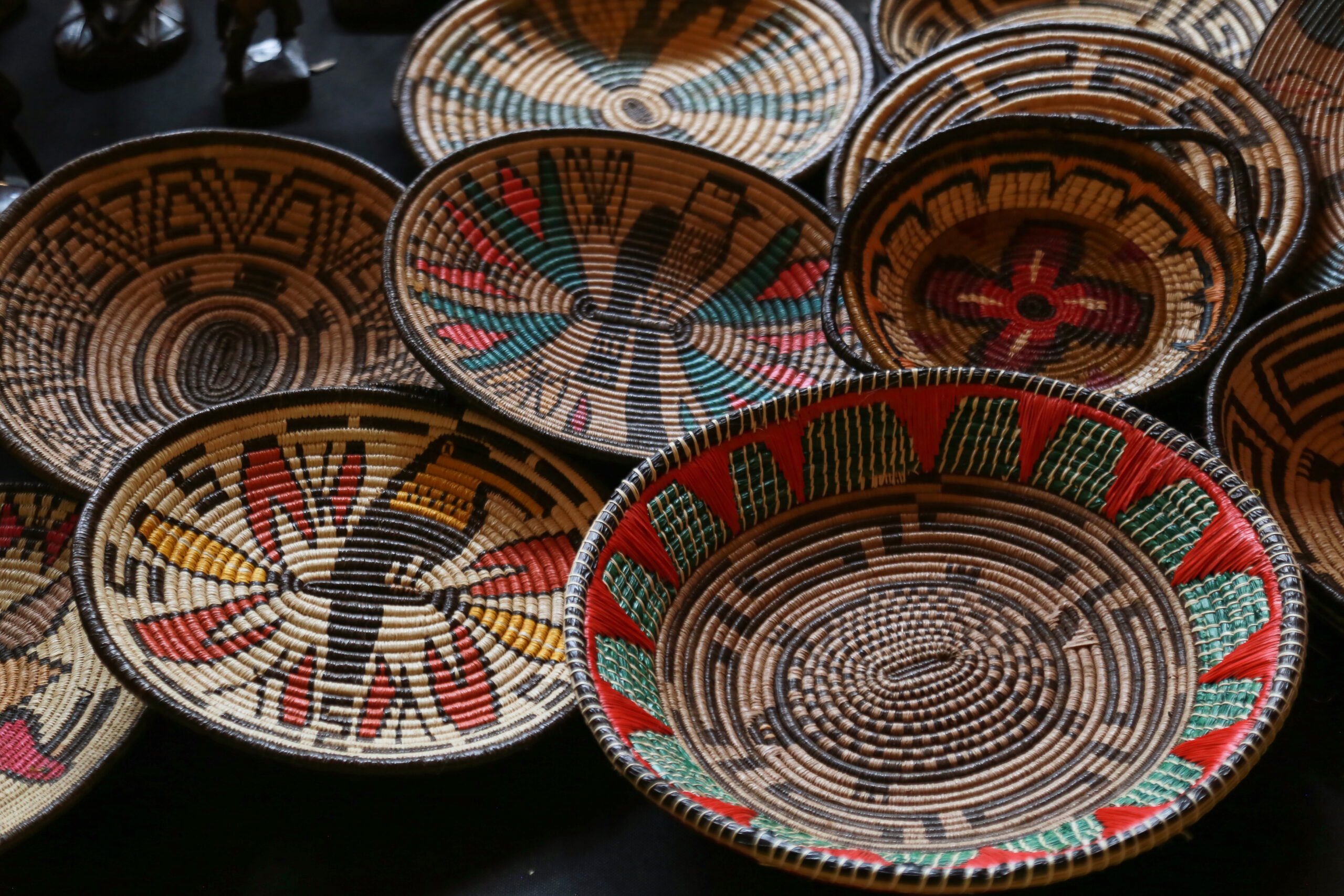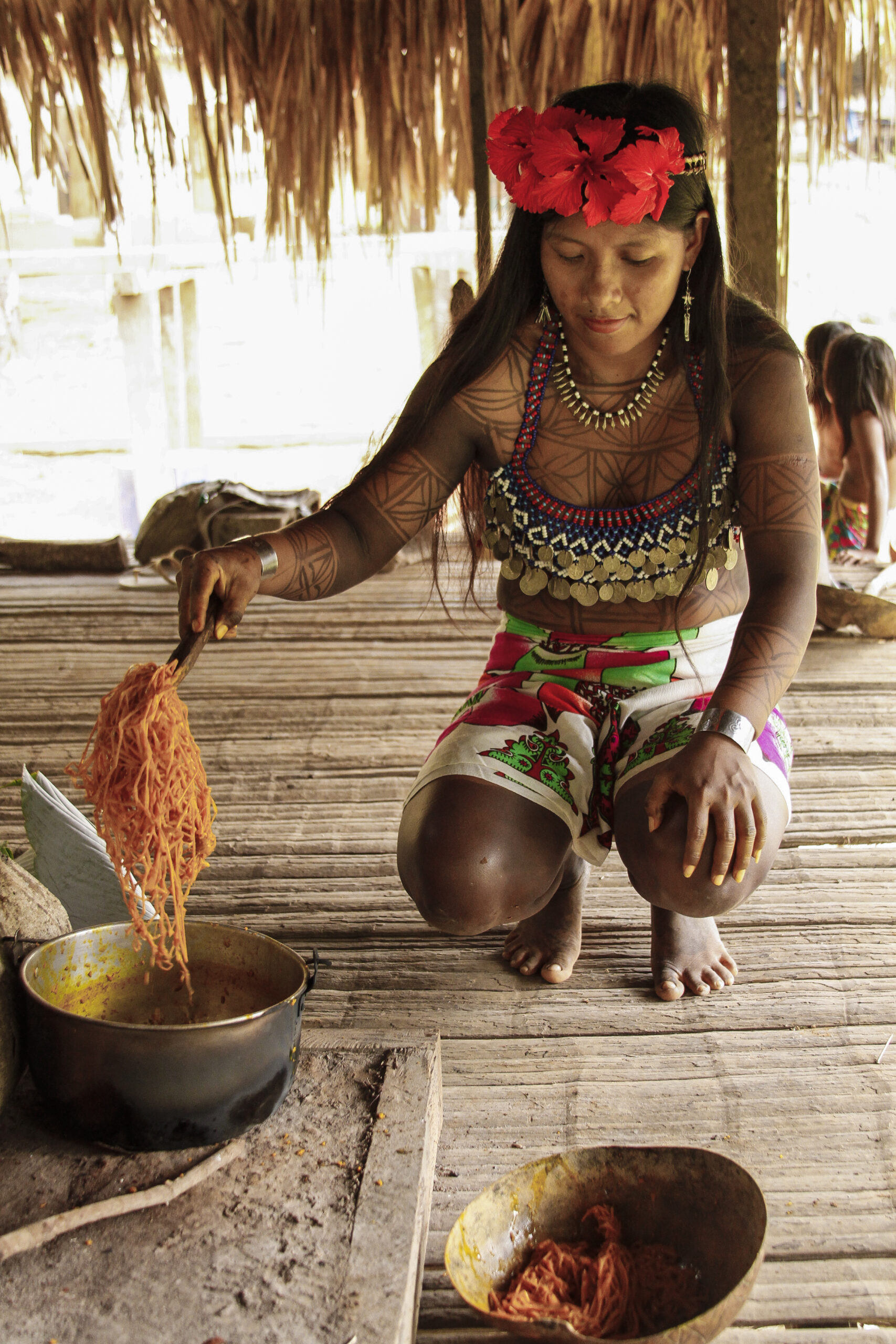Description
La elaboración de artesanías de las mujeres de las naciones wounaan y emberá con fibras vegetales requiere de gran conocimiento de la naturaleza. Se realiza con la chunga (Astrocaryum standleyanum) y la naguala (Carludovica palmata). Las mujeres limpian el cogollo de la chunga, traído por los hombres, tarea tediosa pues la chunga es una palma muy espinosa.
Las hebras útiles se depositan en agua con limón o en agua agria de la caña agria silvestre (Costus spicatus). Hierven las fibras para que sean más resistentes. Las dejan dos días de sol y dos noches en el sereno hasta que su color sea totalmente blanco. Los hilos son rasgados según el tipo de pieza. El cogollo de la naguala se procesa igual y se emplea para darle firmeza a la base y contornos superiores.
Para los tintes emplean hojas, tallos, raíces, corteza, astillas de madera de cocobolo, fango negro, entre otros: la mora (Chlophora tinctorea), el macano (Diphysa robinoides), el añil silvestre (Indigofera sp), el mangle rojo (Rhizophora mangle), jagua (Genipa americana), achiote (Bixa Orellana), ojo de venao (Mucuna sp), bejuco (Arrabidaea chica), azafrán o corí (Curcuma longa). La mezcla de cada colorante se cocina y al hervir colocan las fibras. Para el color negro se entierran en fango negro por horas o se cocinan con astillas de cocobolo. Los hilos se ordenan según el diseño que tienen en sus mentes para armonizar el tejido según las figuras.
Estos productos pueden ser finas canastas, máscaras, platos con diseños geométricos o de animales y plantas del entorno. Según el tamaño, diseño y tipo de tejido una obra puede hacerse en una semana o en un año.
Esta artesanía se realiza en la Comarca Emberá Wounaan y en las Tierras colectivas Emberá Wounaan y en las Tierras Colectivas Emberá de Alto Bayano (Panamá).
english
Fibre baskets, masks and plates
The production of handicrafts by the women of the Wounaan and Emberá nations with vegetable fibres requires a great knowledge of nature. This is done with the “chunga” (Astrocaryum standleyanum) and the “naguala” (Carludovica palmata). The women clean the buds of the “chunga”, brought by the men, a difficult task as the “chunga” is a very thorny palm. The useful strands are placed in water with lemon or in sour water from the wild sour cane (Costus spicatus). They boil the fibres to make them stronger. They are left for two days in the sun and two nights in the shade until they are completely white in colour. The threads are torn according to the type of piece. The heart of the “naguala” is processed in the same way and is used to give firmness to the base and upper contours.
Leaves, stems, roots, bark, wood chips, black mud, etc. are used for dyeing: “mora” (Chlophora tinctorea), “macano” (Diphysa robinoides), wild indigo (Indigofera sp), red mangrove (Rhizophora mangle), “jagua” (Genipa americana), “achiote” (Bixa Orellana), “ojo de venao” (Mucuna pruriens), “bejuco” (Arrabidaea chica), saffron or “corí” (Curcuma longa). The mixture of each dye is cooked and when it boils, the fibres are placed in it. For the black colour, they are buried in black mud for hours or cooked with cocobolo chips. The yarns are arranged according to the design they have in their minds to harmonise the weaving according to the figures.
These products can be fine baskets, masks, plates with geometric designs or designs of animals and plants from the environment. Depending on the size, design and type of weaving, a piece can be made in a week or a year. This handicraft is made in the “Emberá Wounaan” Comarca and in the “Emberá de Alto Bayano” Collective Lands of Panama.



Reviews
There are no reviews yet.